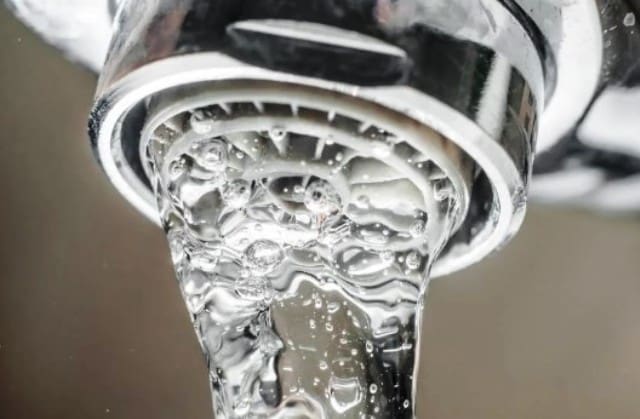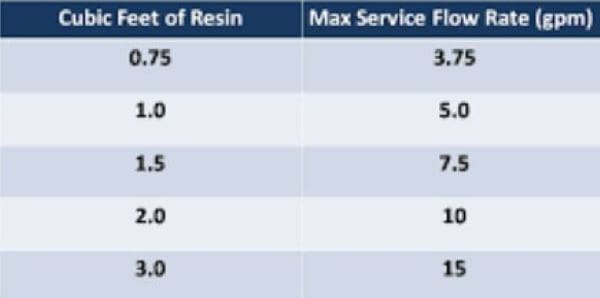
What is the Service Flow Rate?
The number of gallons per minute of softened water that a softener can produce is considered to be the water softener service flow rate. Water softening isn’t an instant process. The water needs to be in contact with the softening resin long enough for the process to be completed. The Number of people living in the home, the size of the house as well as the appliances that will be serviced will affect the Flow Rate the water softener must handle.
SFR requirements will vary with larger homes needing more flow. Appliances using a lot of water and the number of people living in the home may also require more flow. Again, this concept revolves around the fact that the water you’re trying to soften must reside inside the softener long enough for the softening process to happen. Water softener retailers will often show a flow rate for a softener they’re selling.
Knowing how to determine the flow rate that the softener can soften is a pretty important step to making sure the softener you buy can properly service your home.

Softener Flow Rates Are Often Incorrectly Advertised
The flow rate that a water softener can handle – that is – the flow rate where it can produce perfectly soft water is a function of the amount of resin the softener is built with. You will find throughout the industry, water softener flow rates are described by the maximum flow rate that the water softener control valve can physically flow. Control valves are built to be used on softeners of various sizes, and most control valves used in residential softeners are also used in small industrial/commercial softeners. Not surprisingly, the max flow rate that a residential control valve can flow is very high – often in the 15 to 20 gallon per minute range. Many, many residential water softeners are sold showing this maximum control valve flow rate as the flow rate that the water softener can soften, which is incorrect. The flow rate of water that can actually be softened has everything to do with the amount of resin the softener is built with, not the max flow rate of the control valve.
You’re going to buy a water softener because you want soft water, so it is important to learn the proper way to determine Service Flow Rate, and end up with a softener that gets the job done.

How True Service Flow Rate Is Determined
The general rule of thumb is that 1.0 cubic feet of softener resin will fully soften a flow rate of 5.0 gallons per minute as long as the water contains less than 30 grains per gallon (GPG) of hardness. Using that as the basis, the chart below shows the maximum flow rate that softeners of various sizes can fully soften. Keep in mind that in Manitoba water hardness is above 30 most of the time, in fact we have seen it above 100 in this province. If the hardness is higher than 30, than the amount of soft water will decrease, and you may have to go with a bigger water softener than what this chart indicates.
What is important to remember about SFR is that it’s the flow rate at which the softener will produce perfectly soft water. Exceeding the SFR doesn’t mean your resulting water will be fully hard. If you do go over your SFR by a little you may have 2 or 3 hardnesses to get through which is still acceptable in most cases This is still, by definition, ‘soft water’ – it’s just not perfectly soft.

What SFR Does Your Home Require?
Here are four questions to ask yourself before attempting to answer this question:
- Is your water over 30 grains per gallon hard?
- Do you have any water-using appliances that are very sensitive to hardness – such as a boiler or tankless hot water heater?
- Do you have any showers that have multiple heads or body sprayers (these are very demanding, often 5 – 8 gallons per minute by themselves)?
- How many people are living in the house?
If the answer to all of these questions is no, then you likely don’t need a softener that needs to support any more than 5.0 gallons per minute. This would be a 1.0 cubic foot softener.
If the answer to any of these questions is yes, you’d likely benefit from a softener that is larger than 1.0 cubic foot to support a higher flow rate or to ensure perfectly soft water under all flow conditions.
A word of caution: there are very few circumstances where it makes sense to use a softener smaller than 1.0 cubic foot in a residential application. The 3.75 gallon per minute SFR just isn’t sufficient to run a home.
